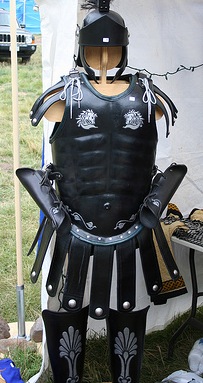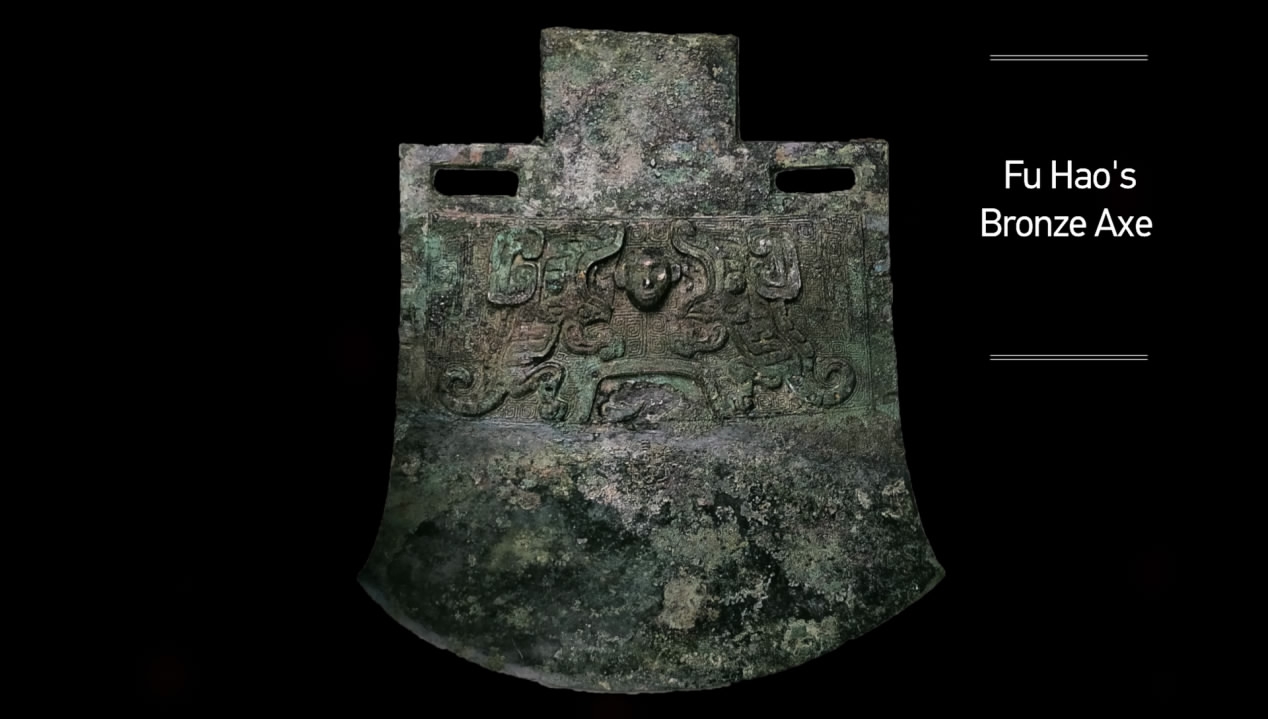|
Strategic Tea posted:Pure guess but I'll go with - olive oil Raw oil would probably become rancid fast? One leather polishing method that would have been available back then is boiled linseed oil and vinegar. Egg whites can also be used to give leather a shine.
|
|
|
|

|
| # ? May 23, 2024 10:40 |
|
Ghost Leviathan posted:Human sacrifice does seem like one of those things that rarely lasts very long as a tradition. The Aztecs were iirc relatively very new as a civilization at their height, and the Romans only saved it for very dire occasions. Even the story of Isaac is iirc sometimes seen as an explicit rejection of human sacrifice, like 'Okay that's enough, you don't need to do that anymore, ever'. Gotta respect the first guy who was willing to go up to a king and try and convince him "So, you're not getting your favorite advisers and courtesans in the afterlife like your father did - but we whipped up mannequins that are just as good! They come to life in the afterlife, trust me."
|
|
|
|
I wonder if anyone tried to compromise by like, making the spots in the tomb for all the servants but just waiting for them to die naturally. Just leave the king to wait for a while in the afterlife before his cook shows up.
|
|
|
|
cheetah7071 posted:I wonder if anyone tried to compromise by like, making the spots in the tomb for all the servants but just waiting for them to die naturally. Just leave the king to wait for a while in the afterlife before his cook shows up. I'm pretty sure the Egyptians did this during the height of the Old Kingdom. The Great Pyramids are surrounded by tombs of retainers and servants and officials who clearly didn't die at the same time as their pharaohs.
|
|
|
|
cheetah7071 posted:I wonder if anyone tried to compromise by like, making the spots in the tomb for all the servants but just waiting for them to die naturally. Just leave the king to wait for a while in the afterlife before his cook shows up. Or set up the tomb at the beginning of a king's reign and stock it with servants as they die, then when the king dies put him in seal it up and start on the next tomb.
|
|
|
|
The Lone Badger posted:Or set up the tomb at the beginning of a king's reign and stock it with servants as they die, then when the king dies put him in seal it up and start on the next tomb. "But Dad didn't even work in the palace, he was a cook for the priests at the temple of Ptah." "Doesn't matter, pharaoh's looking rough and we don't want him hungry in the afterlife, so he gets promoted to burial in the royal tomb."
|
|
|
|
Angry Salami posted:Gotta respect the first guy who was willing to go up to a king and try and convince him "So, you're not getting your favorite advisers and courtesans in the afterlife like your father did - but we whipped up mannequins that are just as good! They come to life in the afterlife, trust me." I mean, how would the king know? "Hmm, I consulted the shamans on this and hear this: all signs point to yes!“
|
|
|
|
Vincent Van Goatse posted:I'm pretty sure the Egyptians did this during the height of the Old Kingdom. The Great Pyramids are surrounded by tombs of retainers and servants and officials who clearly didn't die at the same time as their pharaohs. I was wondering about that, and it'd make sense. Probably not a bad deal to get a burial otherwise far more lavish than you could afford on your own. Angry Salami posted:Gotta respect the first guy who was willing to go up to a king and try and convince him "So, you're not getting your favorite advisers and courtesans in the afterlife like your father did - but we whipped up mannequins that are just as good! They come to life in the afterlife, trust me." Indeed. Funny how it's an idea that comes up seemingly independently with people a lot too, like burned effigies as offerings to relatives in the afterlife, which also comes off as an excuse to show off your arts and crafts. I bet they had contests as to whose statues and models would be deemed worthy for the king's tomb. Also reminded of a webcomic that had a robot burning a paper effigy of itself to serve its late owner in the afterlife... figuring that even if robots don't have souls, it's a totally valid loophole for them to enter the afterlife anyway.
|
|
|
|
Safety Biscuits posted:How old is leather polish, for boots and so on? And what did people use before that, animal fat? Dubbin, which is a wax/oil combo for waterproofing leather, has been around since mediaeval times. Tallow, I think, would also work. According to Wikipedia, polishing leather is a more modern phenomenon. If anyone has read John Waterer's Leather and the Warrior please let me know. e: Huh. Dubbin contains neatsfoot oil, made from the lower legs and feet (but not hooves) of cattle. Elissimpark fucked around with this message at 11:53 on May 7, 2024 |
|
|
|
How does maintaining heavy leather (used for protection against weapons) differ from the relatively thin and supple leather we use for clothing and low-grade protection?
|
|
|
|
I was reading a Bret Devereaux bit about armour last week that was talking about leather armour. It would be boiled to make it rigid, so anything to soften it would defeat the purpose. I'll see if I can find the article.
|
|
|
|
Elissimpark posted:I was reading a Bret Devereaux bit about armour last week that was talking about leather armour. It would be boiled to make it rigid, so anything to soften it would defeat the purpose. I'll see if I can find the article. There’s some discussion here: https://acoup.blog/2023/09/15/collections-the-gap-in-the-armor-of-baldurs-gate-and-5e/
|
|
|
|
The Lone Badger posted:How does maintaining heavy leather (used for protection against weapons) differ from the relatively thin and supple leather we use for clothing and low-grade protection? Arms and armor dork radar has been alerted. tl:dr leather for armor is stiff like rawhide. The maintenance of that would be to maintain the waterproofing used, be it oiling, wax, shellac, whatever was used by that culture/time period. "Leather armor" is a misnomer and mostly a creation of modern/victorian people. Hide armor absolutely was a thing, but in all cases it is akin to rawhide in terms of its flexibility. The most well known version used in the west was "cuir bouilli" aka boiled leather. Another word could be "molded leather" in that it is animal hide that is extensively treated and worked and then pressed into a form. This would be a rigid piece of armor. It was used well into the modern period for various things. Modern reproduction of a muscled cuirass for example  It was also commonly used in other parts of the world, and europe, for "scale mail" or lamellar type armor where the individual plates were of hardened leather instead of metal. The Mongols used it extensively since animal hides were much easier to come by than steel, which you want for swords and spears and arrowheads.  "leather armor" as depicted in media is entirely fictional, as leather supple enough to wear comfortably will easily be stabbed/cut through by any weapon. Sure, anything over your body is better than nothing. To accomplish that though, heavy clothing was far more common as a casual defense than some kind of purpose built soft leather defense. No point in spending a bunch of money on leather when wearing extra clothes you already have works just as well. The biggest source of hollywood confusion seems to be "studded leather" armor, which is most likely just misinterpreting old paintings that show brigandine, which is metal plates riveted to fabric or leather.  
|
|
|
|
Angry Salami posted:Gotta respect the first guy who was willing to go up to a king and try and convince him "So, you're not getting your favorite advisers and courtesans in the afterlife like your father did - but we whipped up mannequins that are just as good! They come to life in the afterlife, trust me." Qin Shi Huang: "well if that's the case there better be a goddamn million of em"
|
|
|
|
Lead out in cuffs posted:Here's some of the background on all that: Thanks for that first link there, it’s good explanation of the issue. I’m not much closer to understanding what exactly Li Shuo means, but I did find a copy of Early Chinese Religion, Part One which is a super interesting collection. The chapter “Rituals for the Earth” by Kominami is particularly wild, the author argues that the Shang state (or “state”) was more like a nomadic army/itinerant court that repeatedly relocated a magic clod of dirt (botu) from their homeland to form the center of a new military base centered around a victory temple (boshe) on someone else’s land, ritually watering it with the blood of the former landowners to revivify the earth for Shang agriculture, like Gun and Yu spreading God’s self-reproducing dirt on the nine abysses of waters to save China from the flood. Seems kind of cranky but what an idea!
|
|
|
|
skasion posted:Thanks for that first link there, it’s good explanation of the issue. I’m not much closer to understanding what exactly Li Shuo means, but I did find a copy of Early Chinese Religion, Part One which is a super interesting collection. The chapter “Rituals for the Earth” by Kominami is particularly wild, the author argues that the Shang state (or “state”) was more like a nomadic army/itinerant court that repeatedly relocated a magic clod of dirt (botu) from their homeland to form the center of a new military base centered around a victory temple (boshe) on someone else’s land, ritually watering it with the blood of the former landowners to revivify the earth for Shang agriculture, like Gun and Yu spreading God’s self-reproducing dirt on the nine abysses of waters to save China from the flood. Seems kind of cranky but what an idea! I know nothing about Shang China, but the idea of a clod of dirt possessing magical properties based on its connection to where it was dug up has parallels elsewhere. It was common in Mesopotamia to use a clod of dirt from a specific place as part of divination rituals when you wanted to know something about that specific place.
|
|
|
|
skasion posted:Thanks for that first link there, it’s good explanation of the issue. I’m not much closer to understanding what exactly Li Shuo means, but I did find a copy of Early Chinese Religion, Part One which is a super interesting collection. The chapter “Rituals for the Earth” by Kominami is particularly wild, the author argues that the Shang state (or “state”) was more like a nomadic army/itinerant court that repeatedly relocated a magic clod of dirt (botu) from their homeland to form the center of a new military base centered around a victory temple (boshe) on someone else’s land, ritually watering it with the blood of the former landowners to revivify the earth for Shang agriculture, like Gun and Yu spreading God’s self-reproducing dirt on the nine abysses of waters to save China from the flood. Seems kind of cranky but what an idea! Dang, that's nuts. I'm struck by how little we seem to know about Shang despite all the oracle bone inscriptions; or maybe it's just a separation between pop history and academic. You get some accounts treating it as just earlier Zhou, and then others where it's totally different.
|
|
|
|
There's also the fact that a lot of the information is in Chinese language academic papers that for various reasons remain untranslated.
|
|
|
|
one of the things that strikes you if you go down the king list for the shang is that often the only thing we know about any given king is that he moved his capital somewhere else. it was pretty rare for the shang capital to remain in one place for more than a couple of kings in a row even once they built the capital complex that pretty much the whole corpus of oracle bones was found at. it is true that the physical mark of kingship for the shang (and the zhou!) was their collection of giant bronze sacrificial cauldrons, too. having nine of those bad boys was what made you the king, spiritually. they go missing after the zhou are toppled and you have to wonder what connection that might have with human sacrifice and popular reactions to it
|
|
|
|
|
The Zhou royal bronzes didn’t just go missing either, the vassals “protected” them when the Zhou got run out of town. Legendarily it’s the fault of the Qin, which is not very likely but only serves to reinforce the point that no vessels = no vassals One of the Shang kings also had a semi-barbarous concubine/priestess/general Fu Hao who got buried with 16 human sacrifices and four giant bronze axes for beheading them. The only Shang royal tomb to remain unlooted, I assume because everyone was too scared of her 
skasion fucked around with this message at 21:47 on May 7, 2024 |
|
|
|
Re: leather muscle cuirasses, assuming you were wealthy enough to have access to it, would you have a layer of mail (plus a textile base layer in either case) underneath as well?
|
|
|
|
From the “Shuihudi daybook”, a set of bamboo slips buried in the tomb of a Qin dynasty administrator, some excellent tips on ghost busting:”Spellbinding, tr. Donald Harper & Mu-Chou Poo” posted:Ghosts harm the people and, acting wantonly, treat the people unpropitiously. Pronounce a spell to bind it and enable the people to avoid the baleful and disastrous. What ghosts detest are namely: reclining in a crouch, sitting like a winnowing basket, linked steps, and standing on one foot.
|
|
|
|
drat those are some cool ghost names. Actually I made you post that sick burn, it was all in my plan, I am not owned for I am the Master of Diagrams
|
|
|
|
do young ghosts have to first work as a diagram apprentice and then journeyghost of diagrams before they get to fully enjoy the divination-resistant foul dreams trade
|
|
|
|
<sounds of neighbour screeching and throwing ashes in the night> *turn to my wife in bed knowingly* Ghost.
|
|
|
|
PittTheElder posted:Re: leather muscle cuirasses, assuming you were wealthy enough to have access to it, would you have a layer of mail (plus a textile base layer in either case) underneath as well? For muscle cuirasses in the ancient world, probably not. Mail basically supplanted bronze/leather/linen armor in the Mediterranean with muscle cuirasses being relegated to Roman officers who would not be expected to be on the front line and for ceremonial use. Putting mail under a mostly ceremonial armor would be heavy, uncomfortable, and completely ruin the appearance which is the whole point of your cool muscly breastplate, all for additional protection you don't need.
|
|
|
|
So to keep hard leather plates from drying out and cracking you use a surface treatment like beeswax, relying on that to trap everything inside and maintain homeostasis?
|
|
|
|
FishFood posted:For muscle cuirasses in the ancient world, probably not. Mail basically supplanted bronze/leather/linen armor in the Mediterranean with muscle cuirasses being relegated to Roman officers who would not be expected to be on the front line and for ceremonial use. Muscle armor was the m9 of the ancient army's, got it
|
|
|
|
Elissimpark posted:<sounds of neighbour screeching and throwing ashes in the night>
|
|
|
|
CrypticFox posted:I know nothing about Shang China, but the idea of a clod of dirt possessing magical properties based on its connection to where it was dug up has parallels elsewhere. It was common in Mesopotamia to use a clod of dirt from a specific place as part of divination rituals when you wanted to know something about that specific place. Heh, that's kinda classic sympathetic magic, like using a cutting of hair or a toenail from someone in order to cast spells upon them. Or Dracula shipping coffins with dirt from his homeland as a loophole around his needs for his resting place. Heck, that was even more or less what Harry Dresden did, making a miniature magical diagram of a city with fragments from buildings and landmarks arranged on the map. Squizzle posted:do young ghosts have to first work as a diagram apprentice and then journeyghost of diagrams before they get to fully enjoy the divination-resistant foul dreams trade From my understanding of Chinese mythology this seems almost a given, and sounds like a fun plot hook.
|
|
|
|
XavierAlexander posted:I see you've also dated a mainlander. Look, I know that the rest of Australia is full of mustachioed, trouser-wearing barbarians, but even they're not that superstitious.
|
|
|
|
The Lone Badger posted:So to keep hard leather plates from drying out and cracking you use a surface treatment like beeswax, relying on that to trap everything inside and maintain homeostasis? These are geared toward LARP leather armor, but tend to answer "yes." quote:Dried-out armor quote:Leather is skin, and is thus not entirely waterproof. Water exposure creates a vicious circle for leather, drying it once it evaporates, and making it less and less waterproof, until your leather cracks and dries out from this repeated process. A good way to avoid that kind of problem is to keep your leather in good condition with a maintenance fat-based salve like Dubbin, which can be applied after you get your leather out of storage. This is specifically on (one piece of) Roman leather armor: quote:at some point in the past the leather was treated with oil.
|
|
|
|
PittTheElder posted:Re: leather muscle cuirasses, assuming you were wealthy enough to have access to it, would you have a layer of mail (plus a textile base layer in either case) underneath as well? In the medieval period, cuir boulli was used as supplementary armor by all kinds of people, knights included. In the period before metal plate armor was commonplace, hardened leather was a rigid defense that could help address mail being a poor defense against blunt impacts, or being penetrated by a sufficiently hard thrust that could break the links. In the classical period, this is unlikely, since the guys wearing that were not on the front line. However the concept of "if one armor is good, 2 is better" is hardly the kind of thing that needs a societal revolution, so someone wearing both is entirely plausible, if not documented. Maybe a lower ranking general/officer we don't have records of did that since he was fighting more often than normal on the frontiers, or had a habit of charging in himself and ended up dying before he became notable. Some of those were also ceremonial as noted above, so if they were light enough and the guy really thought he was in danger, its a thing that plausibly could be done. Keep in mind muscled cuirasses were also made of bronze, and that would have been suitable protection in the classical period. Hardened steel was not being used for the most part, and standard swords or spears would not just thrust right through it in a way that mail would stop. So any general/officer that would wear that kind of cuirass and wanted better armor would have a bronze one. Potentially also a fancy set of segmentata, though afaik we have not found any yet. Generals wearing a high end version of the soldiers kit is extremely common worldwide, so a set of segmentata with higher end steel, decorations, etc is not implausible either, though again we don't have direct evidence of it unless there is artwork I'm unaware of. Late period (357 CE) Reenactor i just found while googling instead of working.  As a corollary, there is little evidence of significant undergarments being used with mail until the medieval period. The romans had something called a "subarmalis" but from what tiny amounts of evidence we have, it was not a thick padded garment like a gambeson, but just some kind of linen of or other cloth worn for comfort, maybe slightly thicker than normal clothing for some scant added protection from wounds if the mail failed. Same for the migration period, everyone was wearing mail but we do not have good evidence of significant padding worn underneath.
|
|
|
|
Star Man posted:I wonder what it took to end the practice of human sacrifice in any given culture. A non-zero number of instances had to be because of a revolt. What is the functional difference between sacrificing a POW to the gods or a Catholic auto da fe? Both the Spanish and the Aztecs were conducting public human sacrifice contemporaneously.
|
|
|
|
There is a tremendous difference in most peoples' minds between execution-as-punishment and human sacrifice. That difference is what leads to execution being far more widely tolerated throughout history than human sacrifice.
|
|
|
|
It's mainly christians trying to act like they are morally superior to the cultures they conquered/wiped out. It's widely tolerated in our culture because christianity is dominant in it. But death is death, regardless of whether you say it was to appease the gods, or to punish a criminal in the name of God, or whatever. Neither are exactly my ideal society, but frankly the christian ones enslaved and killed a whole lot more people, so I find myself extremely unimpressed whenever westerners and others in their christian tradition (even atheist or agnostic ones) talk about how uniquely evil human sacrifice is, way worse than plain old torture and murder.
|
|
|
|

|
|
|
|
If you have a better explanation, feel free to share it.
|
|
|
|
widespread taboos on human sacrifice significantly predate christianity. it's culturally-bound but not to some singular cause. if anything, christianity is against it more because its two main components (jewish law and roman ideas of morality) both don't like it, than it is against it for any self-justifying reason
Mister Olympus fucked around with this message at 23:32 on May 8, 2024 |
|
|
|

|
| # ? May 23, 2024 10:40 |
|
The existence of a state is predicated upon securing the power to hurt and kill people.
|
|
|

























 Yes, it's like a lava lamp.
Yes, it's like a lava lamp.






